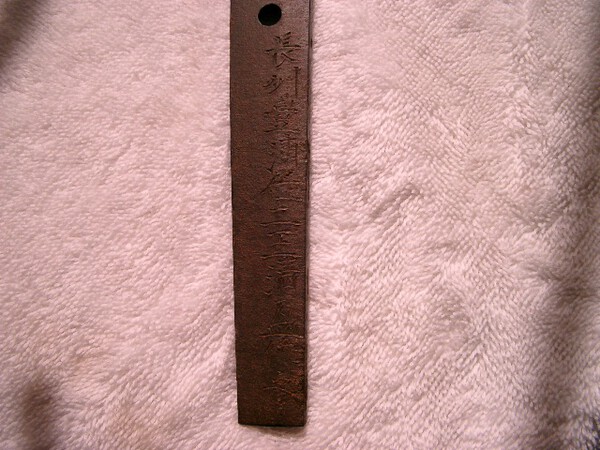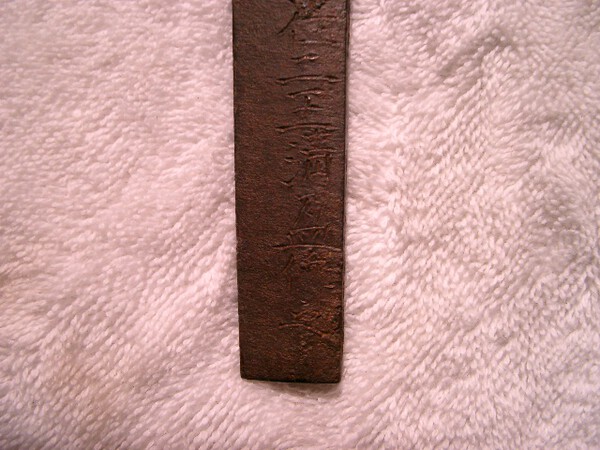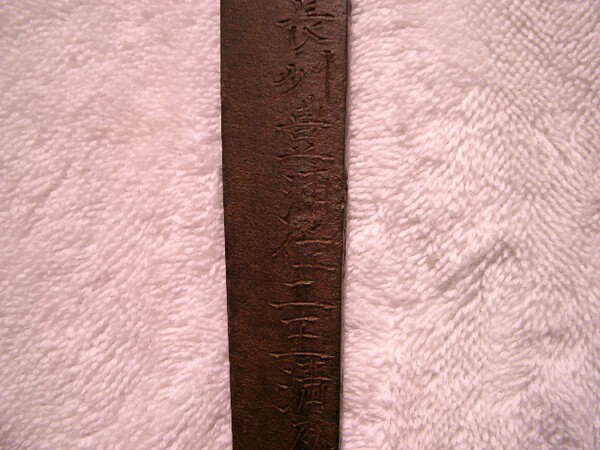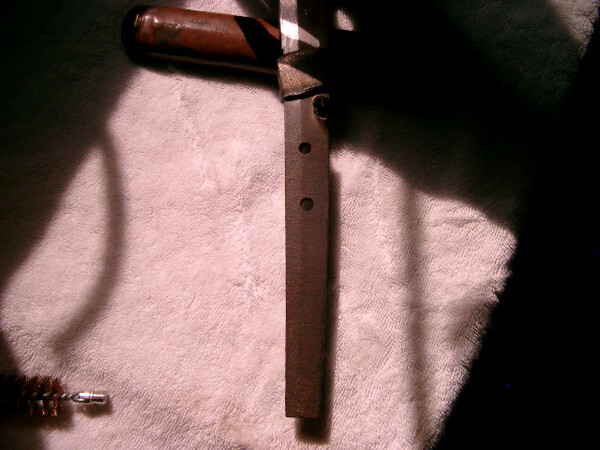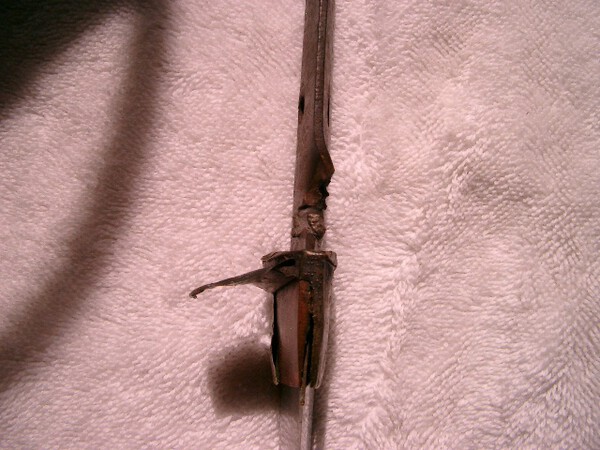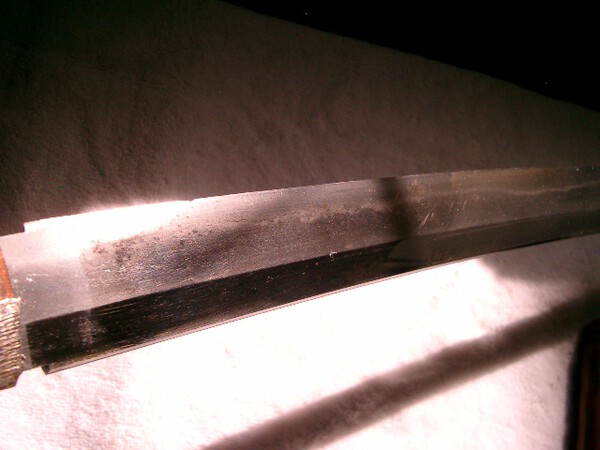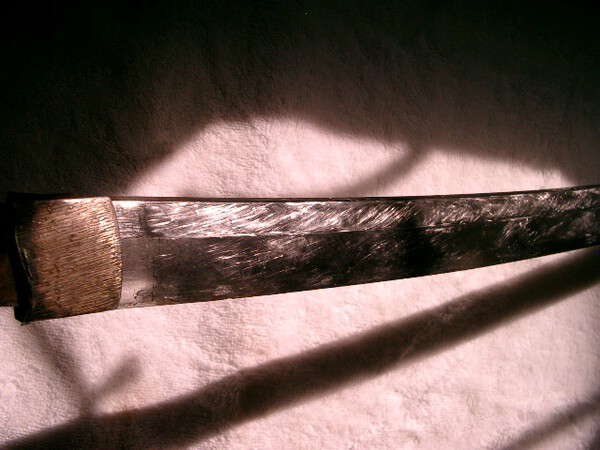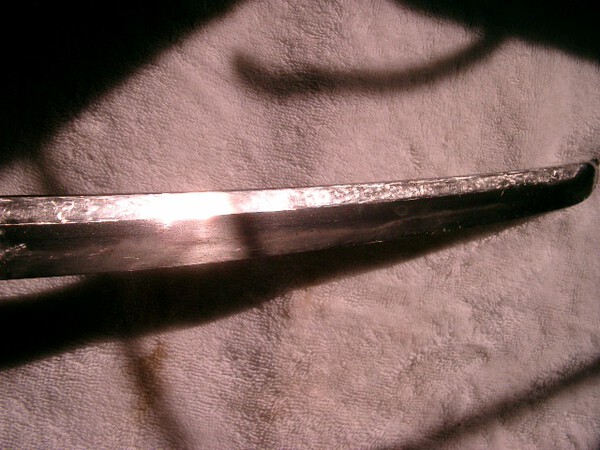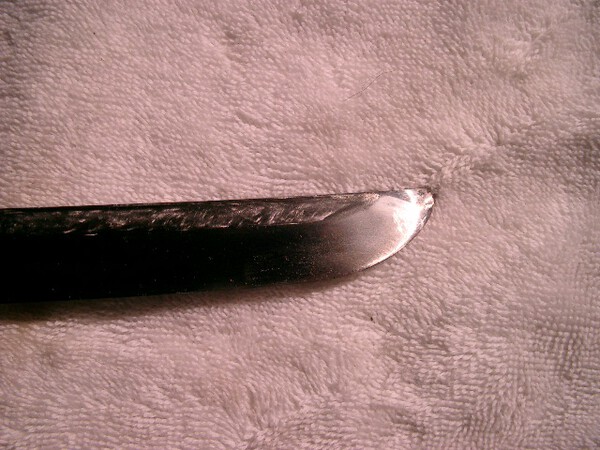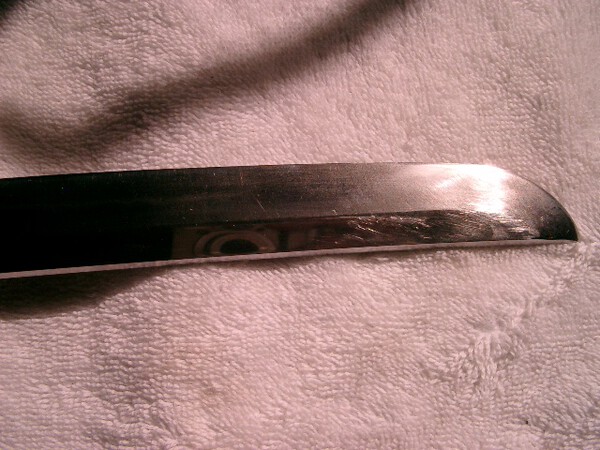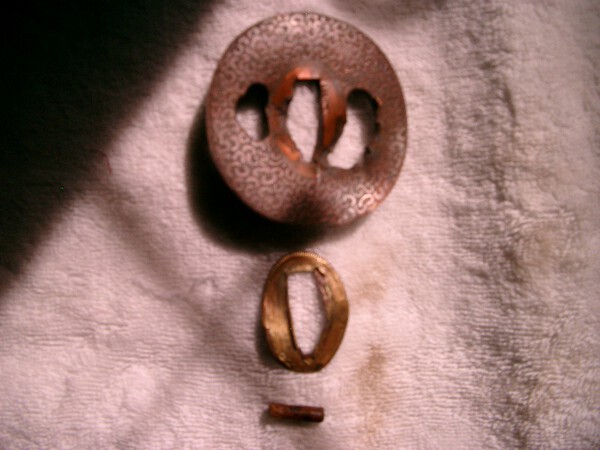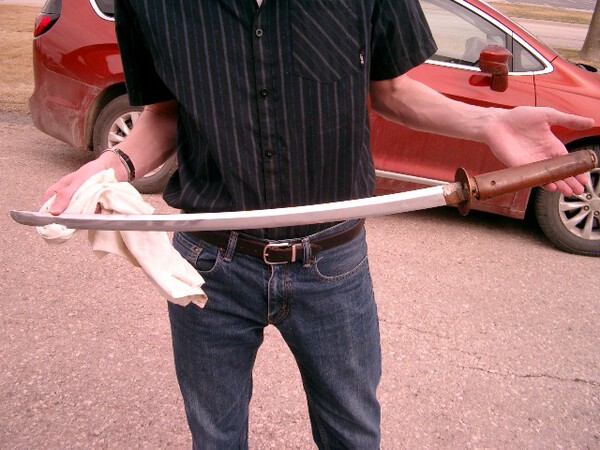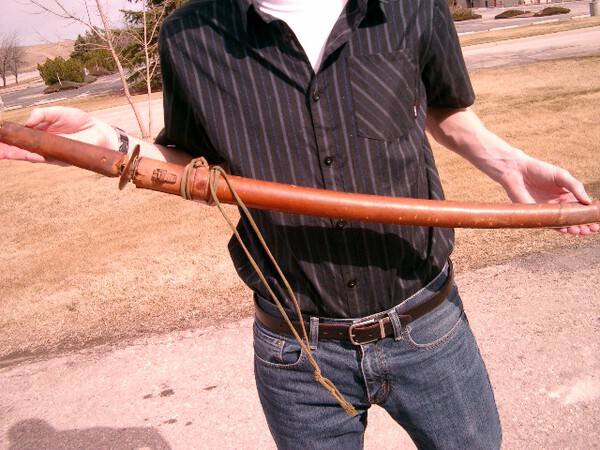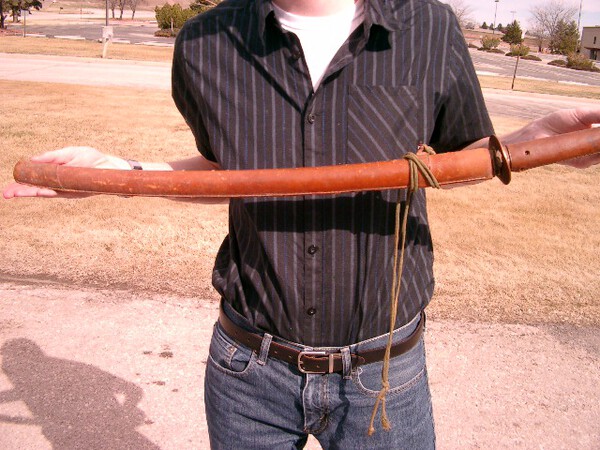
lambo35
Members-
Posts
56 -
Joined
-
Last visited
Content Type
Profiles
Forums
Events
Store
Downloads
Gallery
Everything posted by lambo35
-
M1 Carbines and Garands, a non-op 1918 BAR, Arisakas, Mausers, U.S. military knives/bayonets and parts for my 1945 Willy's MB. My wife tells me "way too much c--p".
-
The last 12 cm of the blade looks like a previous owner used it to roast marsh-mellows. Chuck.
-
C. Nolan's The Allure of Battle .....and nippon-to
lambo35 replied to Peter Bleed's topic in Military Swords of Japan
Dave, I believe you are correct. The commander of the Japanese forces on Iwo Jima, having spent some time in the USA prior to WW2, like Yamamoto, realized the strength America's industrial potential. They both knew Japan could not defeat, only slowdown the Western powers. Chuck. -
Bruce, if you get the two screws, I can use the one you have left over. Many thanx. Chuck
-
Just a WAC [Wild A_ _ Comment]. First, I am a very Newby in the field of Japanese swords, but I do have a little teaching background in Botany. So here is my WAC. Japanese artists are to me, known for accuracy in their art. The Sakura or other flowers used for a decorative purpose I would expect to be accurately portrayed. A 5 petaled flower, such as the Sakura [ Dicot, Angiosperm ] also will have a number of stamen [identified as the Crown in this series of posts] in multiples of 5 [5, 10, 15, 20, etc]. Therefore, a tsuba, made by a Japanese artist would reflect the true number of stamen in their casting of the Sakura. I have not looked up a picture of a Sakura flower, so I do not recall what the real number [ in multiples of 5 ] is. I would therefore believe a real Japanese tsuba, if I counted the number of stamen would have the correct number. A few of the pictures of tsuba above show stamen numbers other than the expected multiples of 5 [11, 12 ], Those are not what I would expect to find on any Japanese representation of the Sakura flower. One of the illustrated tsuba's has 4 per petal [ possibly correct ] therefore I believe this tsuba, which is accurate, is also Japanese made. What do you think of my WAC? Florescence not accurately represented = not Japanese made! Remember, I am really a Newby. Chuck.
-
Logan09 = Thumbs up! Chuck.
-
Positive response made Friday evening. This is a great site, thanx to all who contribute their time and expertise to making it run smoothly! Chuck.
-
Attempting to identify an old blade.
lambo35 replied to Matt House's topic in Translation Assistance
The pictures of the blade will not enlarge. Chuck -
Shin-Gunto Research , what do i have?
lambo35 replied to Scott M's topic in Military Swords of Japan
Scott, your sword looks very nice! As to the oil now on your blade, wipe the blade down with a clean dry cotton rag [old T shirt, mostly cotton is okay], too much of any oil is bad because it will soak into the wood of the saya and collect dust etc which can noticeably mark a blade that is in polish. I would then look for a good quality blade oil [recommendations can be found on these forums] and then check and re-oil with your new oil and continue the same routine every couple of months or so. The frequency will probably depend on the relative humidity where you live. Chuck. -
Shin-Gunto Research , what do i have?
lambo35 replied to Scott M's topic in Military Swords of Japan
I would use a good quality, fine tooth flat metal file that will fit into the current opening. Hold the tsuba firm in a padded vice while filing. It wouldn't hurt to also have available a set of small metal files of various shapes, flat, square, triangular and round. You just never know when a different shape will be needed. Take you time and fit often! Chuck -
From Iwo Jima, Feb. 1945, Showato or earlier?
lambo35 replied to lambo35's topic in Military Swords of Japan
Ray, Many thanx! What an interesting history this blade must have. A quest has begun! Bruce, He landed on Iwo Jima with the second wave on 2/19/1945. Jack was an Armorer in E company, 2nd Batallion, 28 Regiment, of the 5th Marine Division. They landed at the Southern most end of the island, a few hundred yards North of Mt. Surabachi. He was among the Marines that raised the flags three days later. He accidentally left his personal Colt first generation .45 single action in a fox hole on the slopes of Suribachi the night prior to reaching the crest. The Colt was not in the fox hole the next day when they again went up to the top, Jack thought it might still be there under the sand or that it got picked up by a Japanese soldier who was one of several in a gun pit several yards away from their previous night's fox hole [Not noticed during the night, but the reason they rapidly left the next morning]. I did not ask him where on the Island he was when he got the sword. He fought across the neck of Iwo on the first day, three +/- days on Suribachi then the next thirty+ days up the west side of the Island. He was one of only 16 members of his original Regiment who was able to walk off the Island when they were relieved in late March. He was an interesting person to talk with. Chuck. -
This sword was captured by CPL. Jack First, USMC, 2/28/5/E company. Jack passed away in Oct. of 2017. He said the sword came from a Japanese NCO. The Tsuba received a AP round from Jack's Garand which pierced the Nakago. Part of the copper jacket and lead outer core are still inbedded in the perimiter of the bullet hole, the hard steel core having passed through. I would like to X-ray the Tsuka to see if any remenants of the bullet still remain in the Tsuka. Any information on the smith who made the blade and about when in was produced would be greatly appreciated by tha familly.
-
I watched his video and it is evident [iMHO] that he has NOT read enough [me either] to speak authoritatively on the subject of Japanese swords. Chuck.
-
I believe the IJN had many T97 tanks [small ones].
-
Anchor Mon On Rinji (Type 3)
lambo35 replied to Bruce Pennington's topic in Military Swords of Japan
Bruce, my computer skills do not include the ability to transfer photos from one page to another, however, I have seen the pics of the "Naval Specials" on the Gunboards, "Firearms of the Rising Sun" page. Chuck. PS. I just looked at a couple of my books on Japanese rifles. "Military Rifles Of Japan" by Hunnicutt/Anthony, on pg. 154, 155 has pics of the anchor on the receiver/barrel of the Naval special. -
Anchor Mon On Rinji (Type 3)
lambo35 replied to Bruce Pennington's topic in Military Swords of Japan
Another WAG, the Yokosuka Arsenal used the anchor symbol on their late war type 99 rifles [Naval Special]. Could the appearance of the anchor mon on Showato be associated with the Yokosuka naval base/arsenal/administrative complex during ww2? Chuck. -
The habaki does not have 3 continuous lines. From the top, lines #3 and #5 are not attached, do not look to be continuous as they are in Neil's picture.
-
Thanx all. Chuck.
-
Were the Showato Koshirae made by the forge that made the blades or were they sub-contracted, similar to US Carbine production? Chuck.
-
Help With Identification / Translation
lambo35 replied to Pet Dragon's topic in Military Swords of Japan
Thanx Bruce. I have literally spent a dozen + hours reading threads on this forum and several other web pages on fittings, tsuba, seppa, arsenal stamps, etc. I have only had my my sword for a bit over a month, it was a gift from my brother, the learning curve is steep. The vocabulary is daunting, but becoming a bit more manageable as I continue reading [3 books thus far]. i appreciate the help I get from the members here as well as on GB. Chuck. -
Help With Identification / Translation
lambo35 replied to Pet Dragon's topic in Military Swords of Japan
I have a Type 98 by Fugii Kanefugi in which all the seppa and the tsuba have hash marks on their inside surface, IIII III/. The last seppa, the one that interfaces with the saya does not have the hash marks, but is stamped 60 on the inside surface. The fuchi and the nail/latch and the habaki also have the same hash marks. There are no such marks on the nakago. I hope I got the gunto parts named correctly, I am such a newbie to Japanese swords, I am still wetting my pants when I see a new example. :] Chuck. PS. The aluminium saya and kuchigane have the same number, IIII III/ at the throat opening. -
I will get pictures of the whole kit up soon Chuck
-
I am very new to this board and to Nihonto in general. Please forgive my simple questions. I recently acquired a T98 sword made by Fujii Kanefuji in the 1942-43 period and am now exploring its past and type of blade manufacture, etc. Q. Is the brass cap opening to a T98 scabbard called the koifuchi, or is it just the opening in the scabbard regardless of the presence of a brass cap or not? What is the brass cap itself called? Q.Do these scabbard caps [some, many, all] have a small bar, latch, soldered across the inside of the cap, where the button/latch on the blade furniture secures the blade in the scabbard? My scabbard has the retention bar, latch, soldered at an oblique angle so the button/latch on the blade and will only press against the blade retention latch, not locking it in position, this provides resistance against accidental removal, and, not requiring positive pressure against the button for blade removal. Q. Is this modification wartime or post war? Q. Any one else see this before? Many thanx, in advance, for sharing the answers with me. Chuck PS. I am reading. :]



